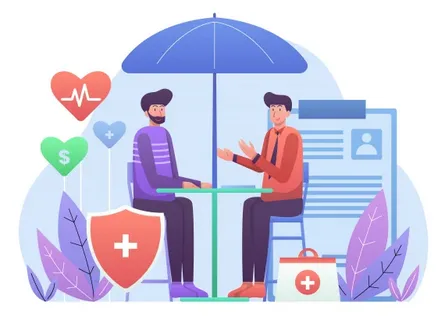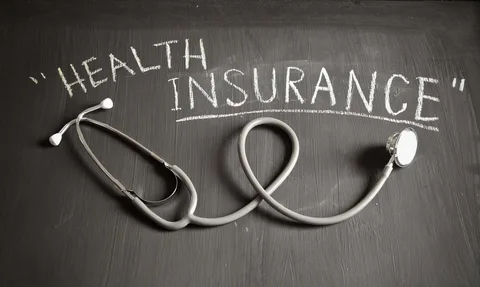Health and Life Insurance (H&L Insurance) is a crucial aspect of financial planning that ensures you and your loved ones are protected against unforeseen health issues and life events. This comprehensive guide will delve into the intricacies of H&L insurance, covering everything from the basics to the more complex aspects, with a sprinkle of humor to keep things light.

What is Health and Life Insurance?
Health and Life Insurance, often abbreviated as H&L Insurance, is a combination of two essential types of insurance: health insurance and life insurance. Health insurance covers medical expenses, while life insurance provides financial support to your beneficiaries in the event of your untimely demise.
Health Insurance
Health insurance is designed to cover medical expenses such as doctor visits, hospital stays, surgeries, and prescription medications. It can be a lifesaver (pun intended) when unexpected medical bills arise.
Life Insurance
Life insurance, on the other hand, provides a lump sum payment to your beneficiaries upon your death. This money can be used to cover funeral expenses, pay off debts, or provide financial security for your loved ones.
Why Do You Need H&L Insurance?
Having H&L insurance is like having a safety net. It ensures that you and your family are financially protected in case of medical emergencies or unexpected life events. Without it, you might find yourself in a financial pickle, and nobody likes pickles, right?
Types of Health Insurance
There are several types of health insurance plans available, each with its own set of benefits and drawbacks. Here are the most common ones:
1. Health Maintenance Organization (HMO)
HMO plans require you to choose a primary care physician (PCP) and get referrals to see specialists. They usually have lower premiums but less flexibility in choosing healthcare providers.
2. Preferred Provider Organization (PPO)
PPO plans offer more flexibility in choosing healthcare providers and don’t require referrals to see specialists. However, they tend to have higher premiums.
3. Exclusive Provider Organization (EPO)
EPO plans are similar to PPOs but with a more limited network of providers. They don’t require referrals but won’t cover out-of-network care except in emergencies.
4. Point of Service (POS)
POS plans combine features of HMOs and PPOs. You need a referral to see specialists, but you can see out-of-network providers at a higher cost.

Types of Life Insurance
Life insurance comes in various forms, each catering to different needs and preferences. Here are the main types:
1. Term Life Insurance
Term life insurance provides coverage for a specific period, usually 10, 20, or 30 years. It’s the most affordable option but doesn’t build cash value.
2. Whole Life Insurance
Whole life insurance offers lifelong coverage and includes a cash value component that grows over time. It’s more expensive than term life but provides additional benefits.
3. Universal Life Insurance
Universal life insurance is a flexible policy that allows you to adjust your premiums and death benefits. It also includes a cash value component.
4. Variable Life Insurance
Variable life insurance allows you to invest the cash value in various investment options, such as stocks and bonds. It offers the potential for higher returns but comes with more risk.
How to Choose the Right H&L Insurance Plan
Choosing the right H&L insurance plan can be overwhelming, but fear not! Here are some tips to help you make an informed decision:
1. Assess Your Needs
Consider your health, financial situation, and family needs. Do you have dependents? Are you prone to certain health conditions? These factors will influence your choice.
2. Compare Plans
Don’t settle for the first plan you come across. Compare different plans, their benefits, premiums, and coverage options. Websites like Healthcare.gov and Policygenius can help you compare plans.
3. Check the Network
Ensure that your preferred doctors and hospitals are in the plan’s network. Out-of-network care can be significantly more expensive.
4. Read the Fine Print
Understand the terms and conditions of the policy. Pay attention to exclusions, waiting periods, and coverage limits.
Common Myths About H&L Insurance
There are several misconceptions about H&L insurance that can lead to confusion. Let’s debunk some of the most common myths:
Myth 1: I’m Young and Healthy, I Don’t Need Insurance
Even if you’re young and healthy, accidents and illnesses can happen. Having insurance ensures you’re covered when you need it most.
Myth 2: Life Insurance is Too Expensive
Life insurance can be surprisingly affordable, especially if you opt for term life insurance. It’s worth getting a quote to see how much it would cost.
Myth 3: I Have Health Insurance, So I Don’t Need Life Insurance
Health insurance and life insurance serve different purposes. Health insurance covers medical expenses, while life insurance provides financial support to your loved ones after your death.
The Future of H&L Insurance
The insurance industry is constantly evolving, and H&L insurance is no exception. Here are some trends to watch out for:
1. Technology Integration
Insurtech is revolutionizing the industry with innovations like telemedicine, wearable health devices, and AI-driven underwriting. These advancements can make insurance more accessible and affordable.
2. Personalized Policies
Insurance companies are increasingly offering personalized policies tailored to individual needs and lifestyles. This trend is likely to continue as insurers leverage data analytics to better understand their customers.
3. Climate Change Impact
Climate change is affecting health and life insurance in various ways. For instance, extreme weather events can lead to higher health risks and increased claims. Insurers are adapting by incorporating climate risk into their models.

Conclusion
Health and Life Insurance (H&L Insurance) is an essential part of financial planning that provides peace of mind and financial security. By understanding the different types of insurance, assessing your needs, and staying informed about industry trends, you can make the best choices for you and your family. Remember, insurance might not be the most exciting topic, but it’s better to be safe than sorry. And hey, if you ever find yourself in a pickle, at least you’ll be covered!
For more information, you can visit Insurance Information Institute or National Association of Insurance Commissioners.
Feel free to reach out if you have any questions or need further assistance. Stay insured and stay happy!